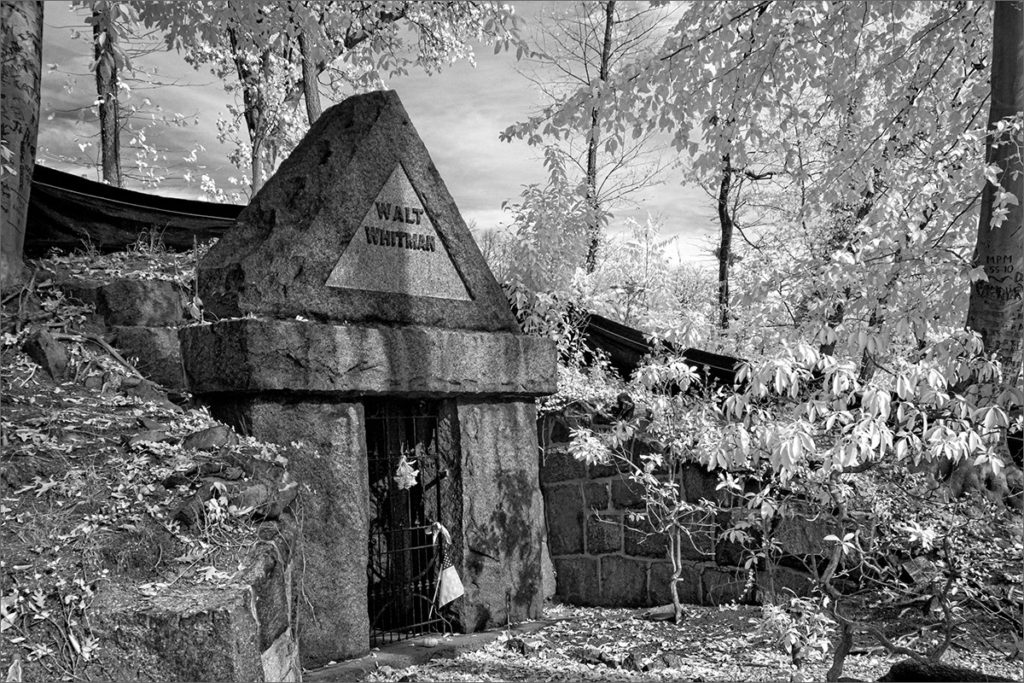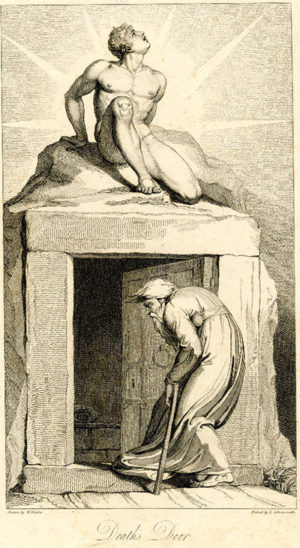

The year 2019 was the Bicentennial Celebration of the birth of American literary great Walt Whitman and commemorative events happened around the country including, Hungtington, NY, where he was born, Long Island, NY, where he began his career as a newspaper journalist, the Library of Congress, and the Whitman House in Camden, NJ, where he spent the final years of his life. Throughout 2019, a steady stream of visitors stopped by Whitman’s famed grave in Camden.
After suffering a debilitating stroke at age 54 in 1873, the “Good Gray Poet” moved to Camden to live as an invalid in his brother’s house. Confined to bed and a wheelchair, the once-robust and widely-traveled newspaper reporter who had tramped through the Civil War as a nurse, spent the next eighteen years in Camden largely focused on two goals: completing the final version of his ever-evolving magnum opus “Leaves of Grass,” and the design and construction of his unique tomb in newly-opened Harleigh Cemetery.
Harleigh was a business venture based on the new concept of “rural” or “garden” cemeteries that had become popular in France and England. The idea was that burial grounds should be park-like experiences where mourners and picnickers alike could wander idyllic paths through wooded settings of lush gardens, water features, ornate statuary, marble benches and the faux-temple mausoleums memorializing the status and wealth of the area’s elite families.
Free cemetery plot
Harleigh’s backers offered Whitman a free plot if he would allow them to advertise that such a famous national celebrity had bought into their new burial facility.
Whitman, whose writings indicate he had been thinking of a grand tomb for himself for some years, agreed to the deal but was required to pay for whatever monument he erected on the grave.
Inspiring illustration
Earlier in life, Whitman had read Scottish poet Robert Blair’s book-length poem “The Grave,” a European classic of the 18th century that was republished in 1808 and richly illustrated with works by British artist William Blake. Included was a a full-page Blake illustration named “Death’s Door” that shows an elderly man making his way past a heavy metal door into a rock slab mausoleum. Whitman found a life-long inspiration in that illustration.
In his final years, as he became ever more frail, many of the literary legend’s friends and admirers raised enough money for him to purchase a small cottage in a more rural and restful area east of Camden. Instead, Whitman took the money and placed a down payment with Reinhalter and Company, a monument engineering firm in Philadelphia. His order was for a massive granite temple-like tomb structure for the 30×30-foot Harleigh plot.
During the construction, Whitman was said to have frequently visited the worksite to watch the stonecutters and occasionally read to them from new sections of writing he had on scraps of paper in his tattered coat pocket. The tomb construction cost $4,000, which in 2019 dollars is a little over $110,000.

